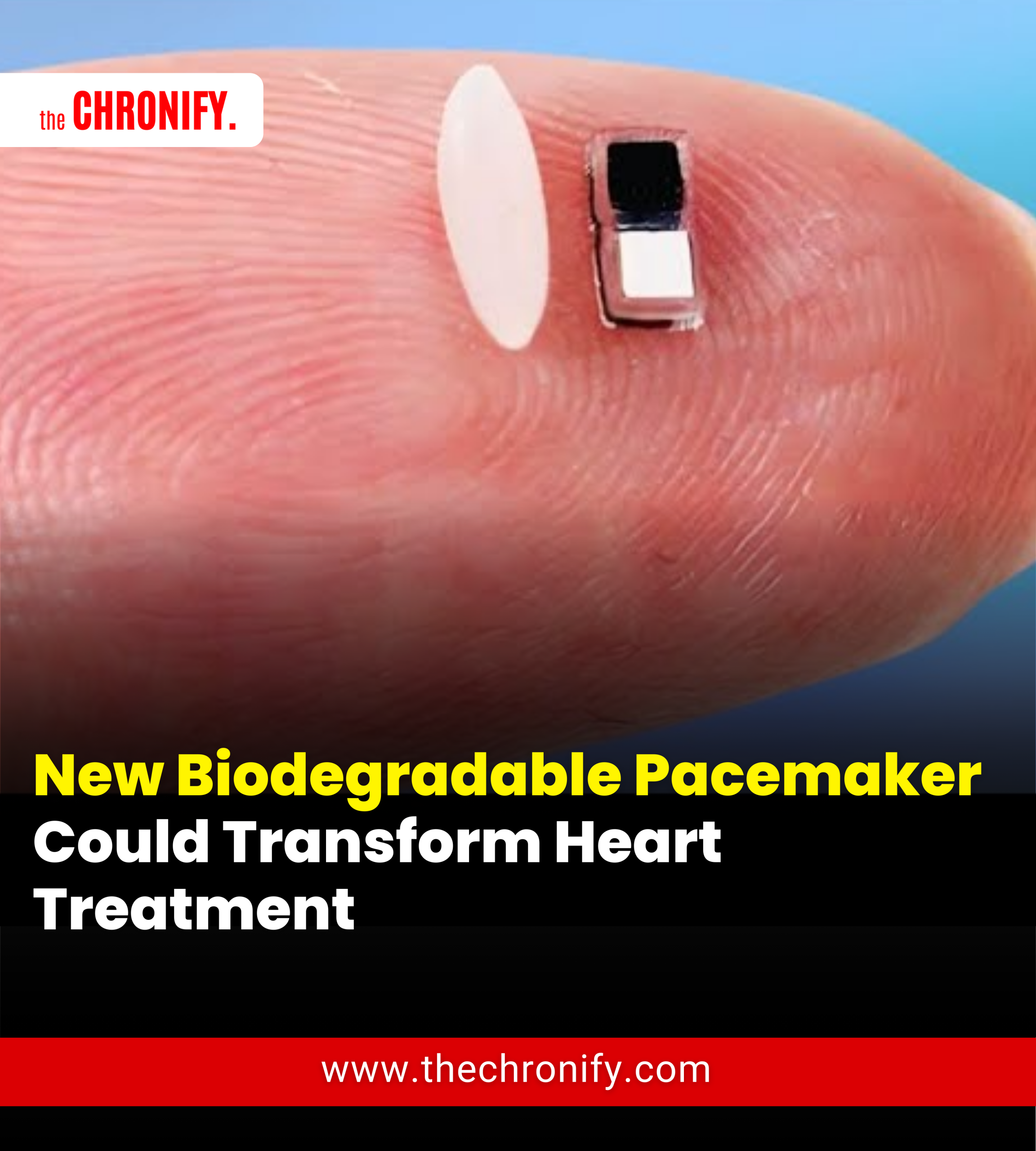Tiny Pacemaker That Heals the Heart and Disappears Developed by U.S. Scientists
In a breakthrough that could transform cardiac treatment, researchers at Northwestern University have unveiled a revolutionary pacemaker — smaller than a grain of rice — that naturally dissolves in the body after completing its function.
This new device, designed for temporary use, is particularly promising for newborns and patients recovering from heart surgery. Unlike conventional pacemakers, which require invasive surgery for installation and removal, the new version can be injected with a syringe and powered wirelessly without the need for batteries or wires.
The biodegradable pacemaker works in tandem with a soft, wearable patch placed on the patient’s chest. This patch monitors heart activity in real time and activates the implanted device using safe infrared light whenever necessary. The light penetrates the skin to power and control the pacemaker, delivering therapy only when needed.
Engineers behind the device say the pacemaker mimics the natural healing timeline. Once the heart regains normal rhythm, the device gradually dissolves inside the body, eliminating the need for further medical procedures.
Researchers also highlighted its adaptability. Multiple pacemakers can be implanted in different heart regions, each tuned to unique light wavelengths. This opens up future use cases in treating complex arrhythmias, nerve disorders, and even bone healing.
Led by bioelectronics pioneer John A. Rogers and cardiac expert Igor Efimov, the team believes this technology could significantly reduce healthcare costs, minimize surgical risks, and bring advanced treatment options to resource-limited settings.
The study has been published in Nature, and researchers are preparing for extended trials to move toward clinical application. If successful, the device could become a game-changer in personalized, non-invasive cardiac care within the next few years.

